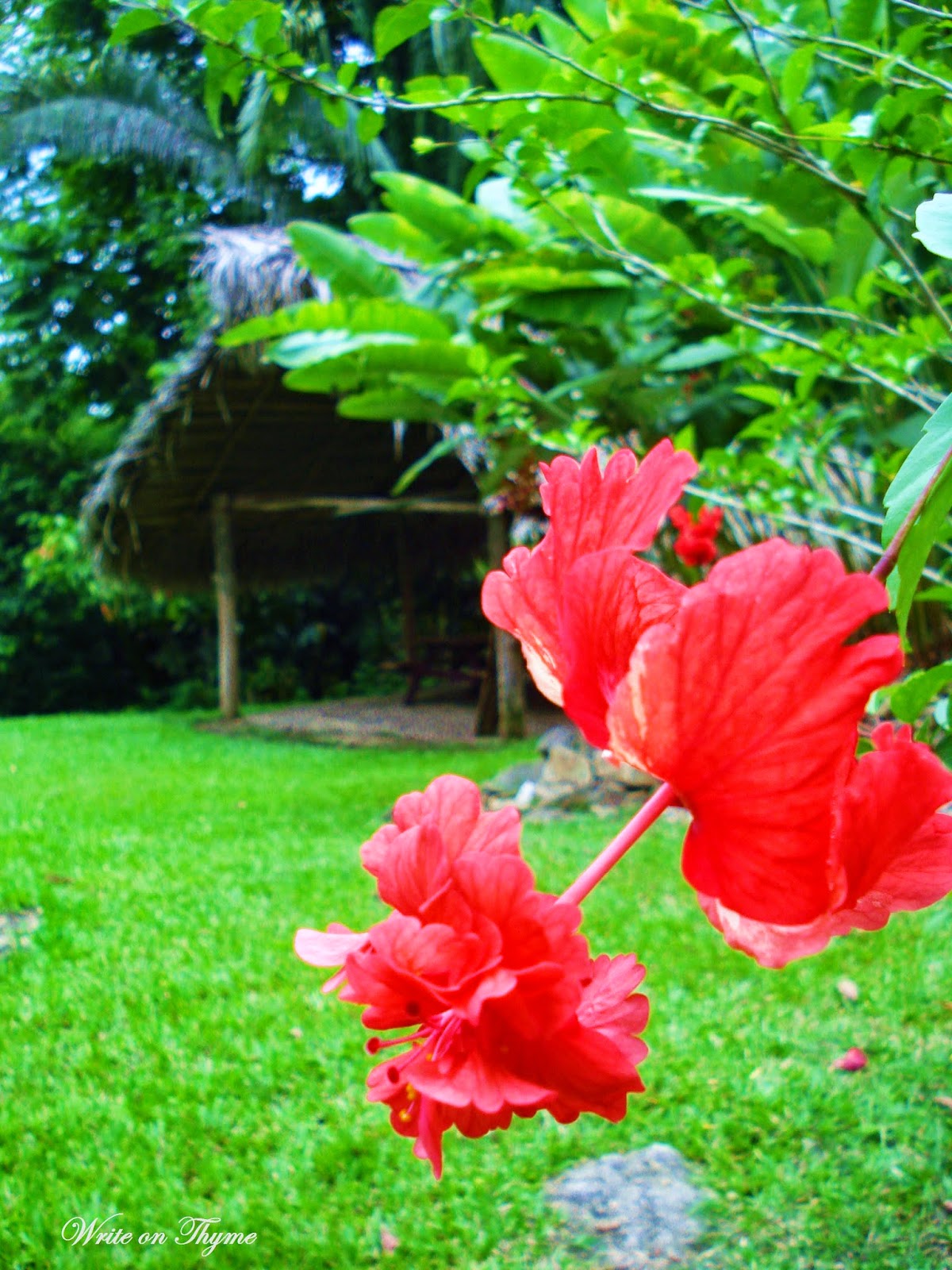We returned recently from Belize
and while there, took a 2 hour bus ride from San Ignacio across the border
into Guatemala to visit Tikal National Park and its amazing Mayan ruins.

During the bus ride,
we got a view of one aspect of a typical day
in the lives of Guatemalan women.
Our tour guide said
"No woman would EVER use another woman's washing stone!"
He also said the women very often get their family's laundry done in the morning
and then must get home before noon to make the mid-day meal.
"No easy feat," he said.
Like in Belize,
there was laundry hanging outside every little shack.
We also realized after driving through Belize over a 9 day period
that right about noon, school children were let out of school
and were all headed somewhere.
So, like Europe in the old days,
the children go home for lunch.
The Mayan ruins of Tikal are located inside Tikal National Park,
222 square miles of jungle and rainforest
which includes 285 species of exotic birds and animals.
On the way into the jungle park,
we stopped along the road where the driver spotted Howler monkeys.
Though I didn't get any good shots,
there were indeed large monkeys high up in the trees who,
when the driver and our tour guide began making loud, bellowing sounds to them,
responded with their own unique howls.
At the entrance to one of the Mayan sites,
we came across these funny creatures:
Coatimundi.
Though you can't quite tell from these photos,
their tails are about as long as their bodies
and their noses are long snouts.
They cared very little that we were there
or how close we got
so gave us plenty of opportunity for photos.

Tikal was one of the most powerful kingdoms of the ancient Maya
during its heyday between 200-900 AD.
While the site dates back nearly 6,000 years,
its population peaked at about 120,000 during the 1st century AD
and then suffered what is still described as an unexplained steep decline.
Bloodletting and ritual sacrifice were a regular part of life.
Our tour guide explained that to the Mayans,
the blood was everything,
the source of all life.
And the Mayans believed that the Gods
gave their own blood for man
so that man's blood was a part of the God's
which meant it was man's obligation to return it.
Often blood was scattered on paper
so they could burn it
and watch it vaporize back to the form of the Gods.

Ball courts were also popular in Mayan daily life.
Little is known of the ball game
except that the ball, like the sun,
must stay in constant motion.
Lost for centuries,
the jungle continues to try to reclaim the site
with work having to be done every few months to keep it clear.
During 1956-1970,
the University of Pennsylvania carried out the most extensive excavations
and while it is one of the largest archaeological sites in the Americas,
much still lies uncovered and lost to the jungle.
Some of the sites are littered with stele, or stone tablets,
covered with hieroglyphs telling stories about the people and certain events
including wars, invasions and prominent figures.
Our guide mentioned
that pyramids and temples were built according to the four directions.
And each time a set of four were finished,
they were often abandoned and a new site was established.
The most sacred room was at the top of the pyramid or temple
where the door opens into a small room.
Everywhere we went
our guide pointed out hills with barely-visible steps leading into the dirt.
"You can bet there's another temple in there."
While nearly 10 square miles
and 3,000 structures have been uncovered,
there is still miles of jungle, and structures, left undiscovered.
The Lost World.
At the end of our tour,
we stood at the top of a structure
which gave us a breathtaking view over the top of the jungle
where other structures poked through the rainforest.
Another dream come true for me:
All my life I've wanted to view the Mayan ruins.
And happy to share it here with you
in all its magnificent, ancient, mysterious glory.
(All photos copyright: Kirsten Steen)













































